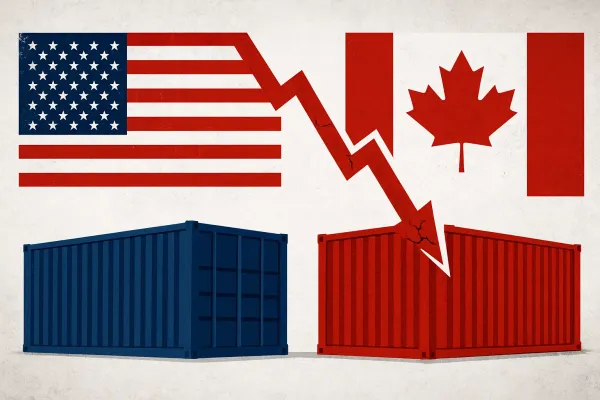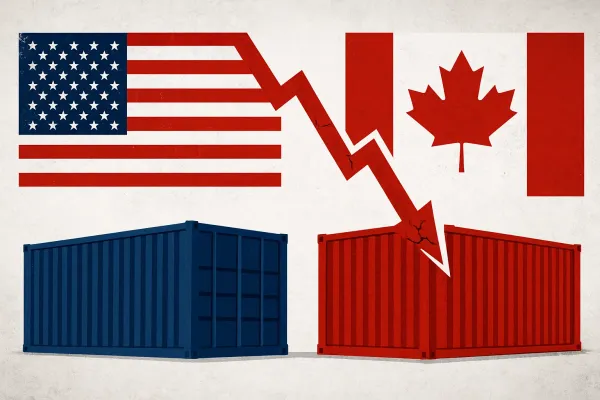India’s Strategic Balancing Act - 2025: Managing Relations with the US, Russia, and China
In 2025, India carefully balances its ties with the US, Russia, and China, safeguarding sovereignty, advancing economic growth, and navigating global geopolitics.

India’s foreign policy has long been guided by pragmatism, strategic autonomy, and the pursuit of national interests. In 2025, the global geopolitical landscape is more complex than ever, shaped by the rise of China, the resurgence of Russia, and India’s emerging influence on the world stage, alongside the growing strategic importance of a strong partnership with the United States. To navigate these multifaceted relationships, India follows a carefully balanced approach, maintaining strategic independence while promoting economic growth, military modernization, and regional influence.
India-US Relations: Strong Partnership at a Crossroads
The India-US relationship has grown significantly over the years, with cooperation in defence, trade, technology, and people-to-people ties forming its backbone. Agreements like BECA, LEMOA, and COMCASA reflect a deepening defence partnership.
However, the economic side of the relationship faces some challenges. Tariffs, trade barriers, and critical remarks from US leaders—including repeated criticisms of India’s trade practices—have the potential to strain ties. Yet, India has been carefully managing this relationship, engaging diplomatically to address US concerns while protecting its own economic and strategic interests. Through negotiation, dialogue, and strategic signalling, India ensures that tensions do not escalate into major conflicts.
Despite these efforts, the situation is delicate. If the US fails to actively resolve trade disputes or reaffirm its commitment to India, there is a risk that New Delhi may explore closer economic or strategic engagement with China. Such a move would complicate the US’s position in the Indo-Pacific and weaken America’s strategic leverage in the region.
At the same time, the US remains a key source of foreign investment, supporting India’s goals in technology, manufacturing, and green energy. For the partnership to remain strong, both sides need active engagement, mutual understanding, and respect for each other’s strategic priorities. India’s careful diplomacy shows that it can balance competing interests—but only if the US also plays its part.
India-Russia Relations: Maintaining Ties Amid Global Pressures
While India has strengthened its partnership with the US, it continues to maintain a strong and historic relationship with Russia, rooted in decades of military, energy, and strategic cooperation. Russia remains one of India’s largest defence suppliers, providing fighter jets, helicopters, missiles, and other critical military hardware.
Despite Russia’s strained relations with the West and international sanctions, India has carefully managed this relationship, staying neutral while protecting its own national interests. Energy security is a major focus, with collaboration in nuclear energy, oil imports, and joint projects helping India diversify its energy sources and reduce dependence on any single partner.
India’s approach reflects strategic autonomy, balancing long-standing ties with Russia alongside growing partnerships with the US and other global powers. By navigating sanctions and geopolitical pressures, India ensures that cooperation with Russia continues in defence, energy, and technology sectors without jeopardizing other relationships.
India’s balancing act with Russia requires careful and strategic engagement. By maintaining strong defence and energy ties while navigating global pressures, India protects its sovereignty and advances the interests of its vast population. This approach allows India to continue fostering robust relations with Russia while striving to balance its partnerships with the US and other global powers. Through thoughtful diplomacy and strategic decision-making, India demonstrates its ability to maintain a flexible, resilient, and forward-looking foreign policy in an increasingly complex world.
India-China Relations: Balancing Economic Ties and Strategic Readiness
India’s relationship with China is complex and multifaceted, shaped by strong economic interdependence as well as strategic rivalry. China is India’s largest trading partner, with bilateral trade exceeding $125 billion, yet the relationship is influenced by regional ambitions and assertive policies that sometimes create friction with its neighbors.
The Ladakh border incidents of 2020 highlighted the challenges arising from these assertive tendencies. India responded decisively and with full preparedness, strengthening its military infrastructure along the northern borders, enhancing surveillance, and deepening defence cooperation with partners like the US, Japan, and Australia. These measures reflect India’s strategic foresight and readiness in the face of evolving regional dynamics.
Diplomatically and economically, India carefully balances engagement with China through multilateral forums such as BRICS, the Shanghai Cooperation Organization (SCO), and the G20, while protecting its strategic interests. India also follows cautious trade policies, scrutinizing investment flows, ensuring supply chain resilience, and maintaining diversified economic engagement to safeguard national priorities.
This approach reflects India’s strategic autonomy and proactive stance, allowing it to manage competition effectively, protect sovereignty, and continue benefiting from economic ties, all while remaining fully prepared in a complex regional and global environment.
The Balancing Act: Navigating Multiple Global Partnerships
India’s ability to maintain strong relationships with the US, Russia, and China simultaneously reflects its strategic diplomacy, foresight, and commitment to sovereignty. Managing these partnerships requires careful coordination across defence, economic, and diplomatic domains.
Key factors that enable India to navigate this complex landscape include:
- Strategic Autonomy: India avoids formal military alliances, instead building flexible partnerships that allow it to protect national interests and maintain independence in decision-making.
- Defence Diversification: India sources military equipment from multiple partners — the US, Russia, France, and Israel — ensuring operational readiness and independence from any single country.
- Economic Pragmatism: India engages in trade and investment with all three powers, leveraging economic partnerships to boost growth, technology, and supply chain resilience.
- Multilateral Engagement: Platforms such as BRICS, G20, Quad, and SCO enable India to engage all three countries effectively, promoting regional stability, constructive dialogue, and global cooperation.
Through this balanced, proactive approach, India demonstrates its ability to protect sovereignty, foster economic growth, and strengthen strategic influence in a rapidly evolving global environment.
Challenges and Opportunities: India’s Strategic Engagement
India’s engagement with the US, Russia, and China involves navigating a dynamic global landscape. While each relationship presents unique considerations, India approaches them with strategic foresight and flexibility.
Key Considerations in Managing Partnerships
- US-Russia Dynamics: India carefully coordinates its relationships with the US and Russia, ensuring continued defence cooperation, energy security, and economic engagement while maintaining strategic autonomy.
- China’s Assertive Policies: India balances economic ties with China alongside security preparedness, leveraging trade benefits while safeguarding sovereignty and regional stability.
- Global Geopolitical Shifts: Rapid changes in the Indo-Pacific, evolving Russia-West dynamics, and emerging technological competition require adaptive diplomacy and forward-looking strategies.
Opportunities for India
India’s proactive approach to these relationships also creates significant opportunities:
- US Partnership: Leveraging support for defence modernization, technology collaboration, and influence in the Indo-Pacific.
- Russia Engagement: Strengthening energy security, defence capabilities, and space cooperation.
- China Cooperation: Collaborating on trade, climate initiatives, and multilateral platforms to advance economic growth and regional stability.
By strategically balancing challenges and opportunities, India demonstrates its ability to protect national interests, advance economic growth, and maintain a resilient foreign policy in an increasingly complex global environment.
Conclusion: India’s Strategic Diplomacy in a Complex World
India’s foreign policy reflects a sophisticated balancing act, guided by pragmatism, strategic autonomy, and national interest. By nurturing strong partnerships with the US, maintaining historical ties with Russia, and managing complex relations with China, India has carved a unique and influential position in global geopolitics.
This careful equilibrium enables India to advance economic growth, strengthen security, and pursue diplomatic objectives while maintaining the flexibility to respond to changing global dynamics. Through nuanced diplomacy, strategic foresight, and proactive engagement, India demonstrates its ability to protect sovereignty, safeguard national interests, and maintain resilience in an increasingly complex international environment.
As global alliances shift and new challenges emerge, India’s approach positions it to remain influential, adaptable, and prepared, ensuring that its foreign policy continues to serve the long-term interests of the nation and its vast population.
Loved this article?
Visit our main page for more insights and subscribe for updates!





